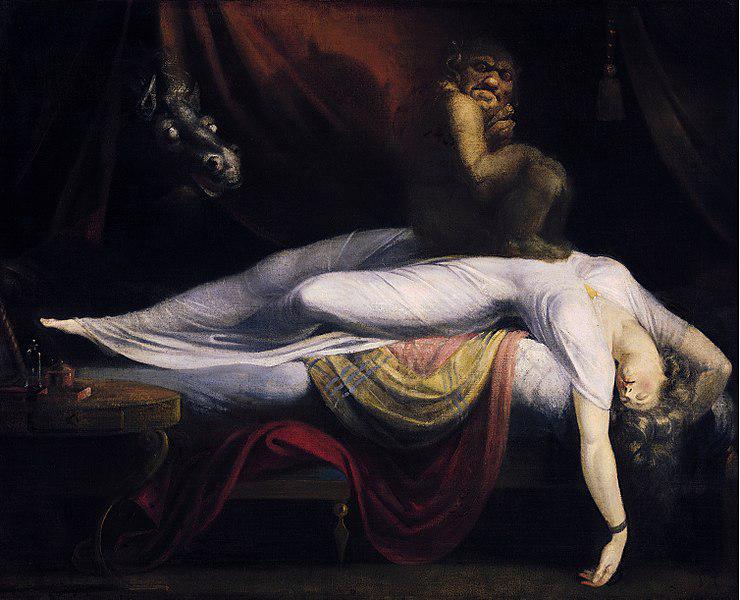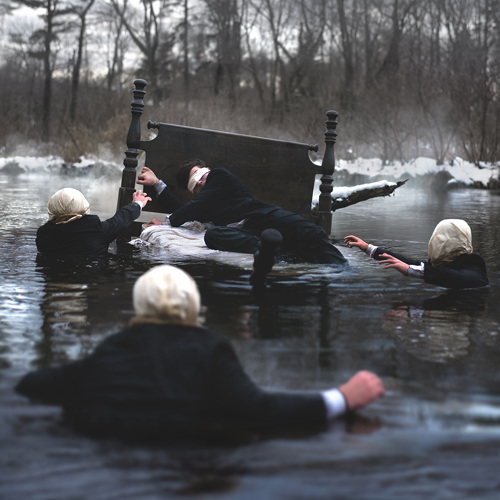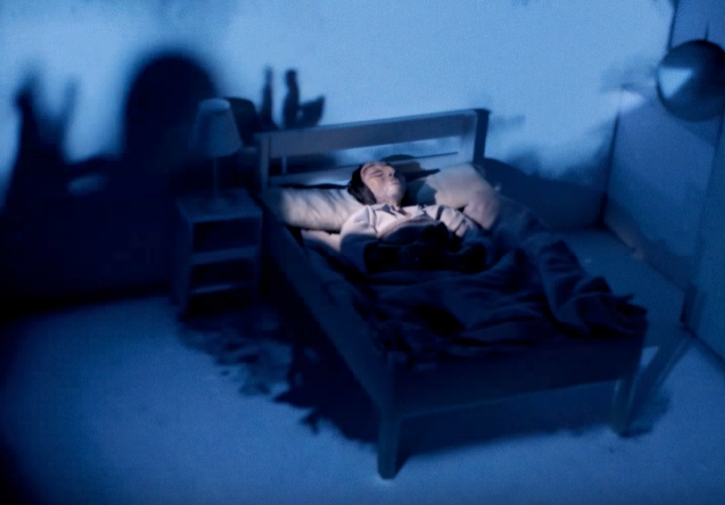Artistic works inspired by sleep paralysis
By Sonam Kaloti, Arts Editor
Sleep paralysis is an experience that many people have at least once or twice in their lives. For some, it can be a much more regular experience. Sleep paralysis is being conscious but unable to speak or move. It occurs when your body stays paralyzed during rapid eye movement (REM) sleep (so you do not act out your dreams) while your brain is awake. The experience can be rather frightening, but rest assured, it is not actually harmful and typically only lasts a few seconds or minutes.
During sleep paralysis you may be able to move your eyes; find it hard to breathe as though your chest is being crushed or restricted; hear, feel, or see things that aren’t there; and/or feel an evil presence in the room.

There’s been a common thread of similar hallucinations experienced by people throughout time and across many different cultures: Whether it be curious shadowy figures watching you from across the room, Hat Man who lingers in your doorway, the Old Hag who crushes your chest, or a demon who has sex with you.
I once had a little girl in my room who slowly crept up to me between blinks and distorted into a piranha-like monster, proceeding to scream two inches from my face. Also, I’ve experienced some auditory hallucinations (my friend speaking in a spooky voice about his bad acid trip where his girlfriend’s face melted off) paired with a loud buzzing sound. I made a Flipnote of it on my DSi to try to explain what the hell happened, but professional artists capture the experience to a far better extent.
The Nightmare (1781) – Henry Fuseli

A classic oil painting by Henry Fuseli, The Nightmare is thought by some researchers and psychologists to be an early artistic representation of the condition. It shows a woman asleep with a demonic incubus perched atop her chest. The painting itself is elegant, with the woman dressed in a loose white gown and her arms dangling. The room is decorated with red drapery, a nightstand, and the head of a ferocious horse peeking through the curtains.
In Shakespeare’s translated Romeo and Juliet Mercutio says, “Mab is the old hag who gives false sex dreams to virgins and teaches them how to hold a lover and bear a child.” Romeo and Juliet was published around 1595, and witch hunts in Europe and North America were still occurring into the late 1600s. Back then, people who had episodes of sleep paralysis were labelled as being visited by ghosts, witches, and demons, or accused of being witches themselves. Nowadays, due to lack of research and awareness many people who experience sleep paralysis claim that they were abducted by aliens.

Photographer Nicolas Bruno is one of the few who has dealt with consistent sleep paralysis episodes throughout his life. Eventually occurring daily, his disorder became detrimental to his mental health and everyday life. According to interviews with Fstoppers and Yatzer, he began surrealism photography in order to materialize his terrors so he could confront them more easily. Bruno’s work often contains images of faceless figures terrorizing him. The colours in his works are neutral and subdued, adding a dreamlike quality. The quiet of the backgrounds provides an eerie calmness to what is clearly a violent scene. Most of the characters look helpless and trapped, just as one feels during an episode. Despite the dark meanings and symbolism to his work, the pictures are aesthetically pleasing.
Devil in the Room (2014) – Carla MacKinnon

Filmmaker Carla MacKinnon posted a seven-minute short film on YouTube in 2014 titled Devil in the Room. The video is a multi-media creation featuring voiceovers of different people recounting their sleep paralysis experiences atop jarring real-life videos with added effects and animation. The film discusses both myths and the psychological side to the disorder. There’s a bit of a back and forth between speakers due to the way they approach the subject. Near the end, one speaker says, “It’s a physiological effect […] it’s not real,” followed by a menacing tone that says, “It doesn’t matter if it’s real because it feels real, and that’s what matters isn’t it?”
Sleep paralysis still lacks a lot of research and it remains an uncommon phenomenon, thus artistic expressions like these are the closest most people can come to understanding this unfortunate terror. Luckily, we are past burning witches, lest anyone claiming alien abductions finds themselves at a stake.


